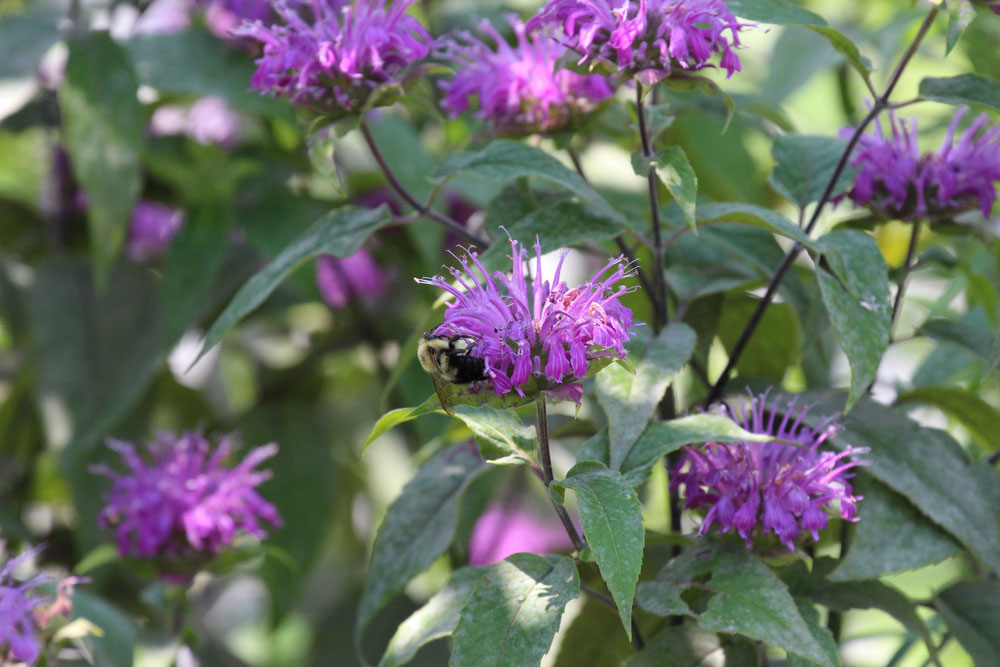Do you have bee balm planted in your garden and want to grow something else with it? If this is the case, you’re probably wondering what the best bee balm companion plants are.

Suitable companion plants for bee balm include phlox, peonies, and tomato plants. Phlox and peonies share the same preferred growing conditions as bee balm and complement its colors well.
Tomato plants benefit greatly from the ability of bee balm to repel pests and attract bees. Read on to learn more about each of these plants and others as well!
1. Phlox
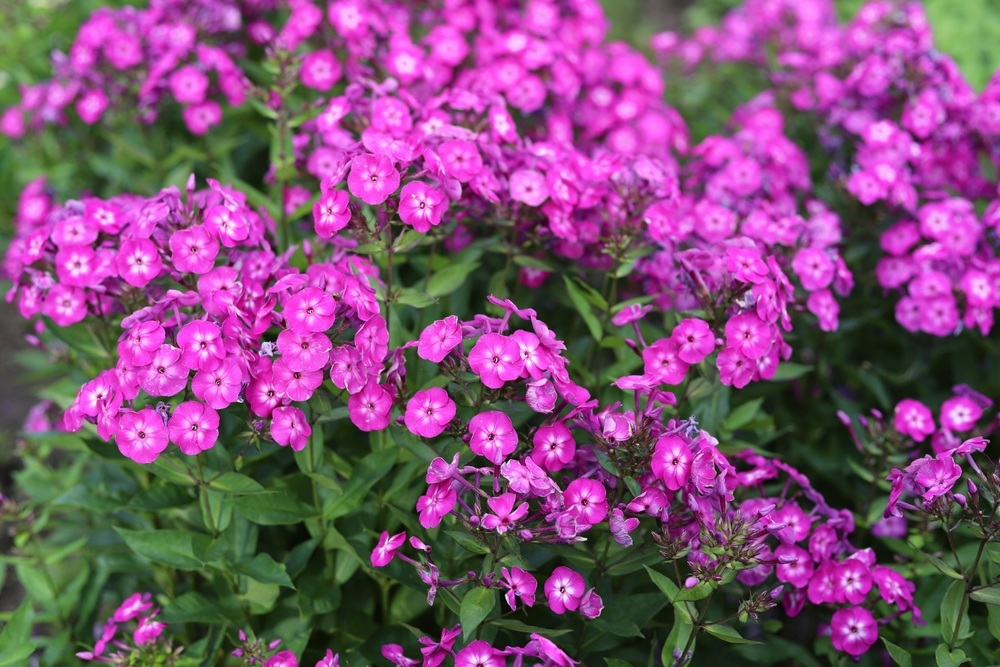
The first entry on our list is the phlox plant. This plant is an excellent choice for inexperienced growers thanks to its low-maintenance nature. Phlox plants need well-drained soil and partially filtered sunlight to thrive.
Phlox comes in various hues, giving you flexibility in terms of your garden’s color palette when growing it with bee balm. You can go for purple phlox if you want your garden to have one uniform color.
On the other hand, you can grow blue or white phlox for some beautiful contrast when it blooms along with your bee balm in the summer.
This plant is most commonly used as a border plant for bee balm.
2. Roses
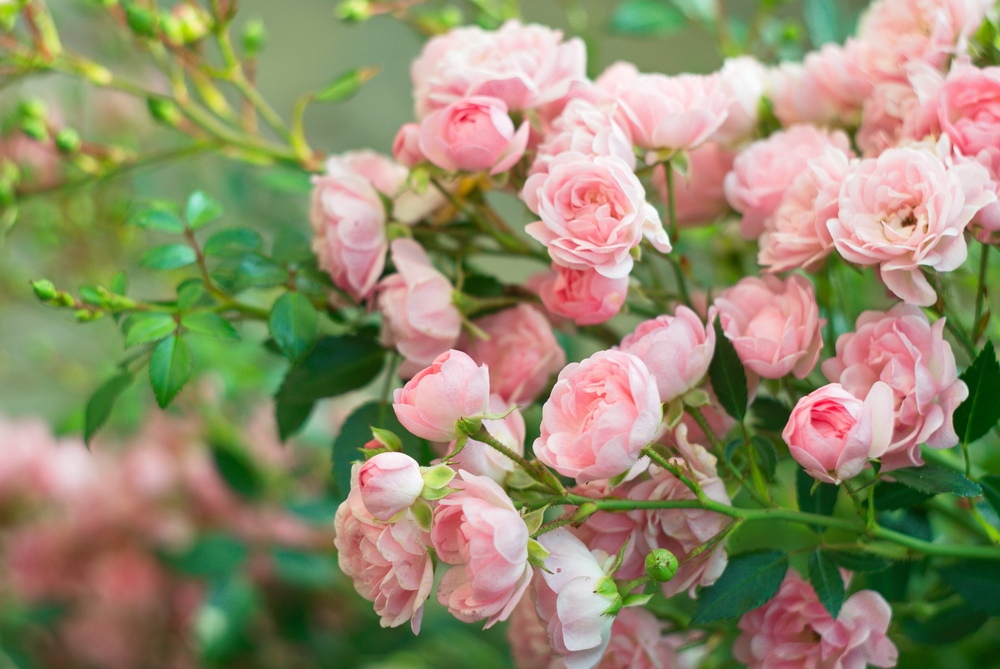
Another great option to complement the bee balm in your garden is roses. These stunning red flowers, along with the vibrant pink bee balm, will have you struggling to take your eyes off your garden.
In addition to this, roses are a fantastic match for bee balm because both plants grow best in the same conditions. These conditions include direct sunlight and well-drained soil.
Furthermore, the ability of bee balm to keep away pests and attract pollinating insects such as bees and butterflies will greatly benefit their neighboring roses.
3. Black-Eyed Susans
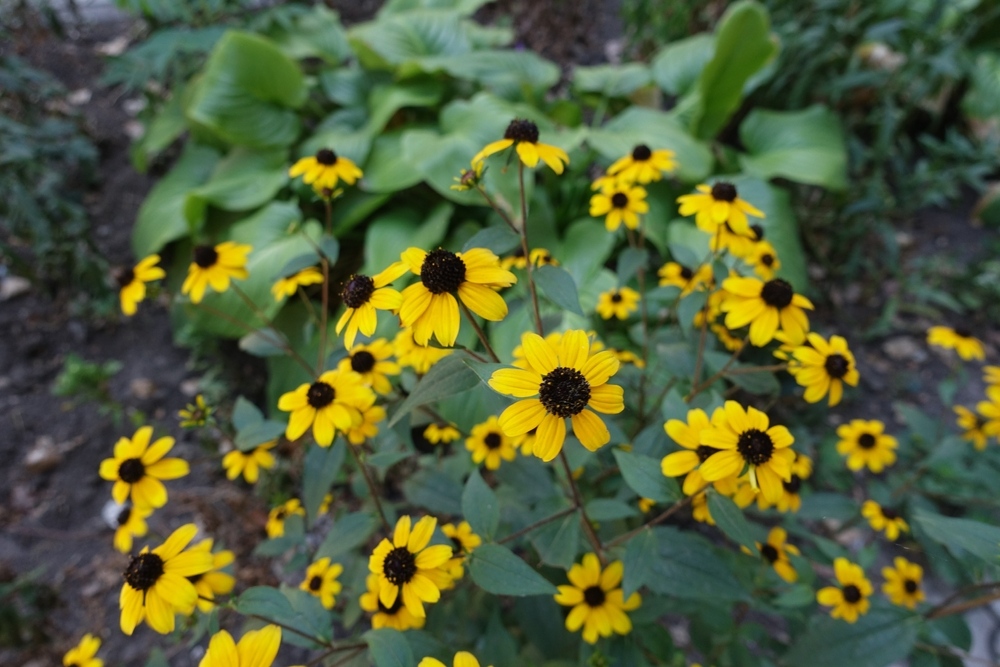
In your search for the ideal companion plant for bee balm, you’ll be hard-pressed to find a better option than black-eyed Susans.
These plants have large, bright yellow flowers that light up any garden. So, you can only imagine how breathtaking they would look with the beautiful pink petals of bee balm mixed in.
The relationship between your black-eyed Susans and bee balm will be a mutually beneficial one. The former gives the latter enhanced visual appeal, while the latter gives the former valuable functional benefits.
Thanks to its minty smell, bee balm deters pests such as flies, beetles, and mosquitos. In addition, it produces lots of nectar, drawing in bees to pollinate itself and its black-eyed Susan neighbors.
4. Coneflowers

The next candidate we recommend is coneflowers.
These plants have a large spiky center that gives them a unique look. Radiating from that center are light-pink, downward-facing petals that’ll be a perfect match for the perky bee balm flowers with their deeper shade of pink.
Just like bee balm, coneflowers prefer well-drained soil. However, you should note that they need to water more frequently. Additionally, always make sure that the soil is dry to avoid the coneflowers getting root rot.
5. Tomato Plants
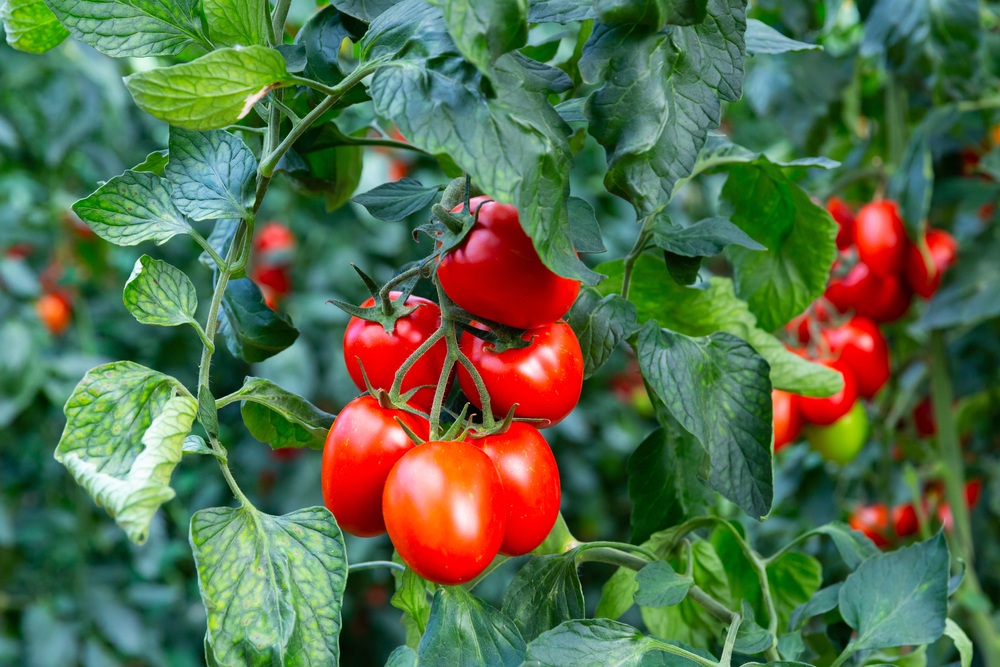
If you want to make the most out of your bee balm’s ability to attract pollinating insects, then planting tomato plants with it is an excellent choice.
You’ll reap the benefits of this when it’s time to harvest the tomatoes. The enhanced pollination brought about by the bee balm will increase the yield. It can also give an extra dimension of flavor to your juicy tomatoes.
Since tomato plants grow much taller than bee balm, you should plant them behind the bee balm so that its beautiful pink flowers remain visible.
6. Peonies
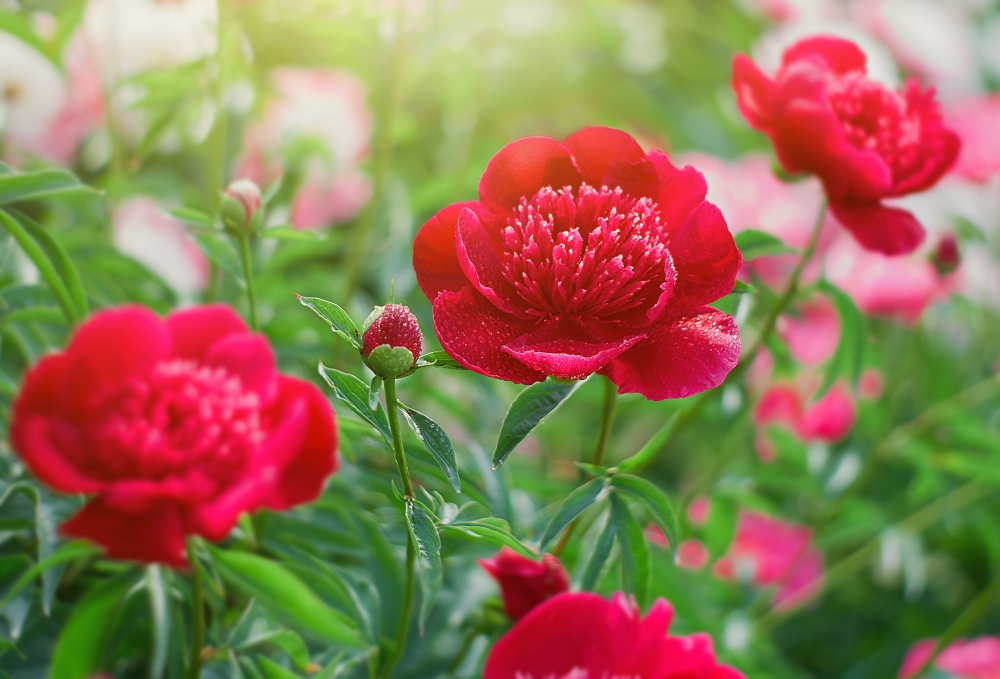
Peonies are another option you can go for that’ll do wonders for your garden’s aesthetic appeal when grown with bee balm.
When in bloom, these plants produce large, stunning flowers. Peonies typically bloom towards the end of spring. By the start of summer, their pink, white, or crimson flowers will be on full display.
If you go with peonies, grow them in front of your bee balm since they’re typically a foot shorter.
7. Squash

Another crop that would be served well when grown next to bee balm is squash.
With the bee balm keeping pests at bay and bringing in plenty of bees to pollinate the squash, you won’t need to worry about adding pesticides.
This means that you’ll have a greater yield of organic crops, something you’ll surely be thankful for when using those zucchinis in your favorite recipes.
In terms of visuals, the squash plant can be in either vine or bush form. Either way, its foliage will provide a beautiful backdrop for your bee balm’s pink flowers.
8. Daylilies
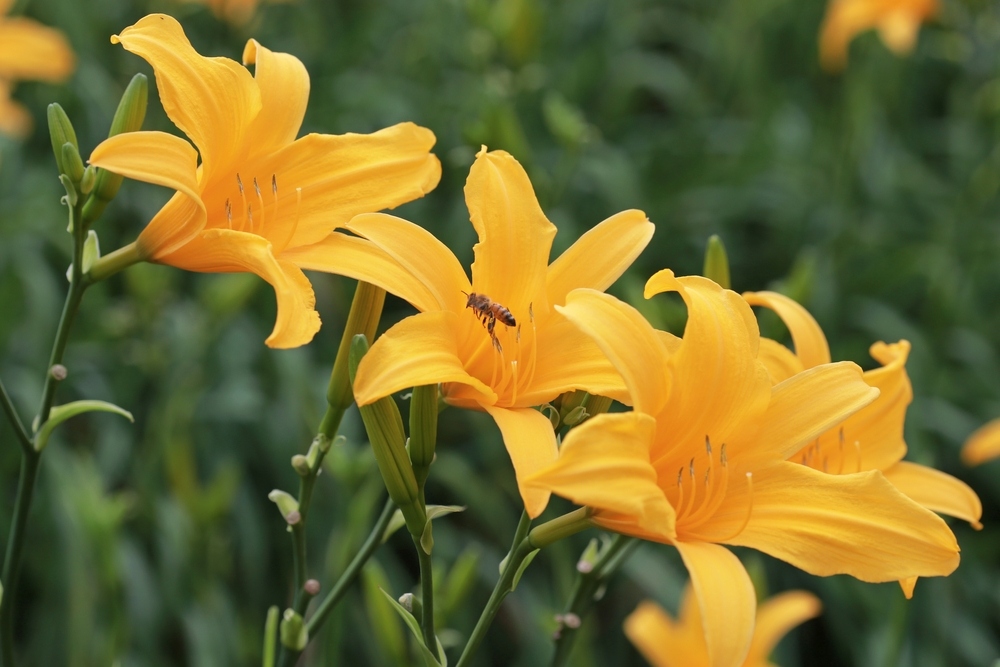
When thinking of flowers, there aren’t many that come to mind that are prettier than daylilies. These plants come in all sorts of colors, including yellow, orange, red, purple, and blue. Any of these colors will make your garden look exquisite when planted next to bee balm.
Since daylilies are vulnerable to pests, growing them with bee balm erases this problem. Therefore, both plants will benefit from this partnership.
Another factor that makes daylilies a good match for bee balm is that both plants thrive in direct sunlight and well-drained soil.
9. Hostas

Hostas are foliage plants that usually don’t produce any flowers. However, their voluminous, emerald-green foliage will perfectly complement the splashes of pink from your bee balm.
This is not to mention the beautiful smell of hostas. When combined with the minty scent of bee balm, the resulting aroma is truly a joy for the senses.
The large surface area of hosta plants’ foliage is highly appealing to beetles and other pests. Fortunately, this shouldn’t be an issue since the pest-repellent qualities of bee balm will keep those pesky critters at bay.
10. Blanket Flowers

In a similar fashion to phlox, blanket flowers make great border plants for bee balm due to their diminutive size.
When the summer comes along, these plants produce bright red, yellow-tipped petals that’ll provide a breathtaking aesthetic next to the pink flowers of bee balm.
To put the icing on the cake, blanket flowers share the same preferred growing conditions as bee balm. This makes growing the two plants together highly convenient.
The Bottom Line
That was our list of 10 bee balm companion plants. All of these plants were carefully selected to complement the appearance with various colors. They also thrive in similar growing conditions, so you won’t have to take special care of any of them.





